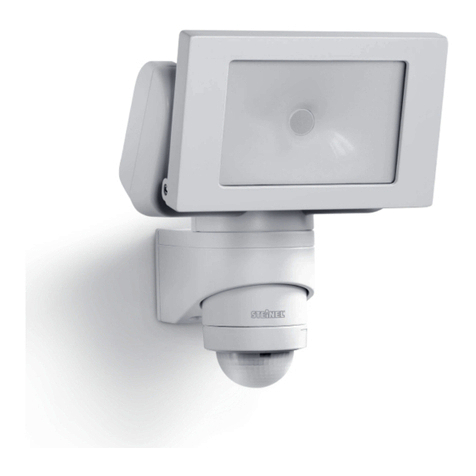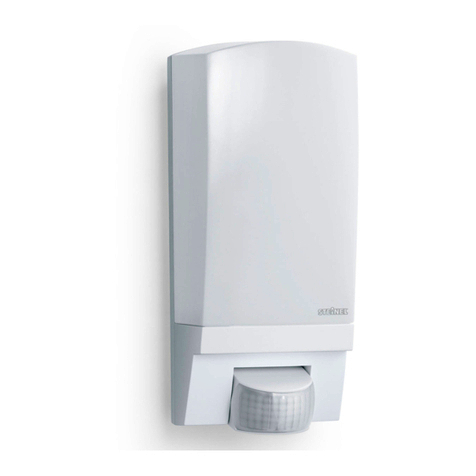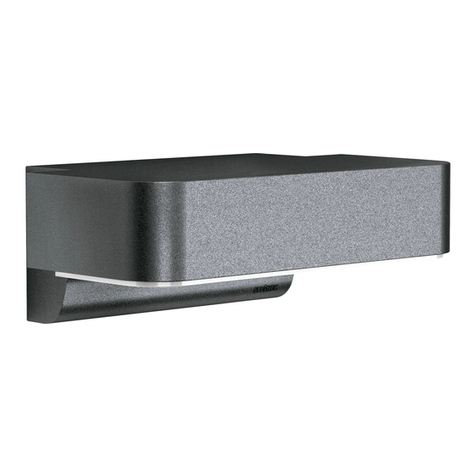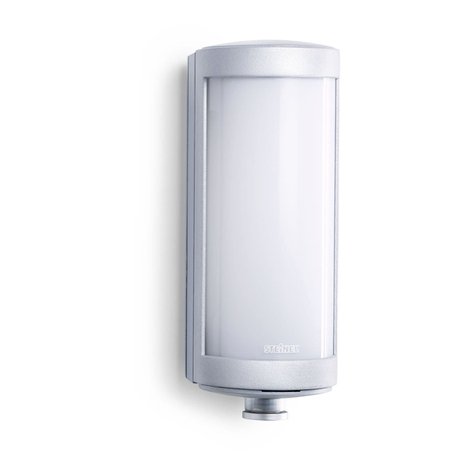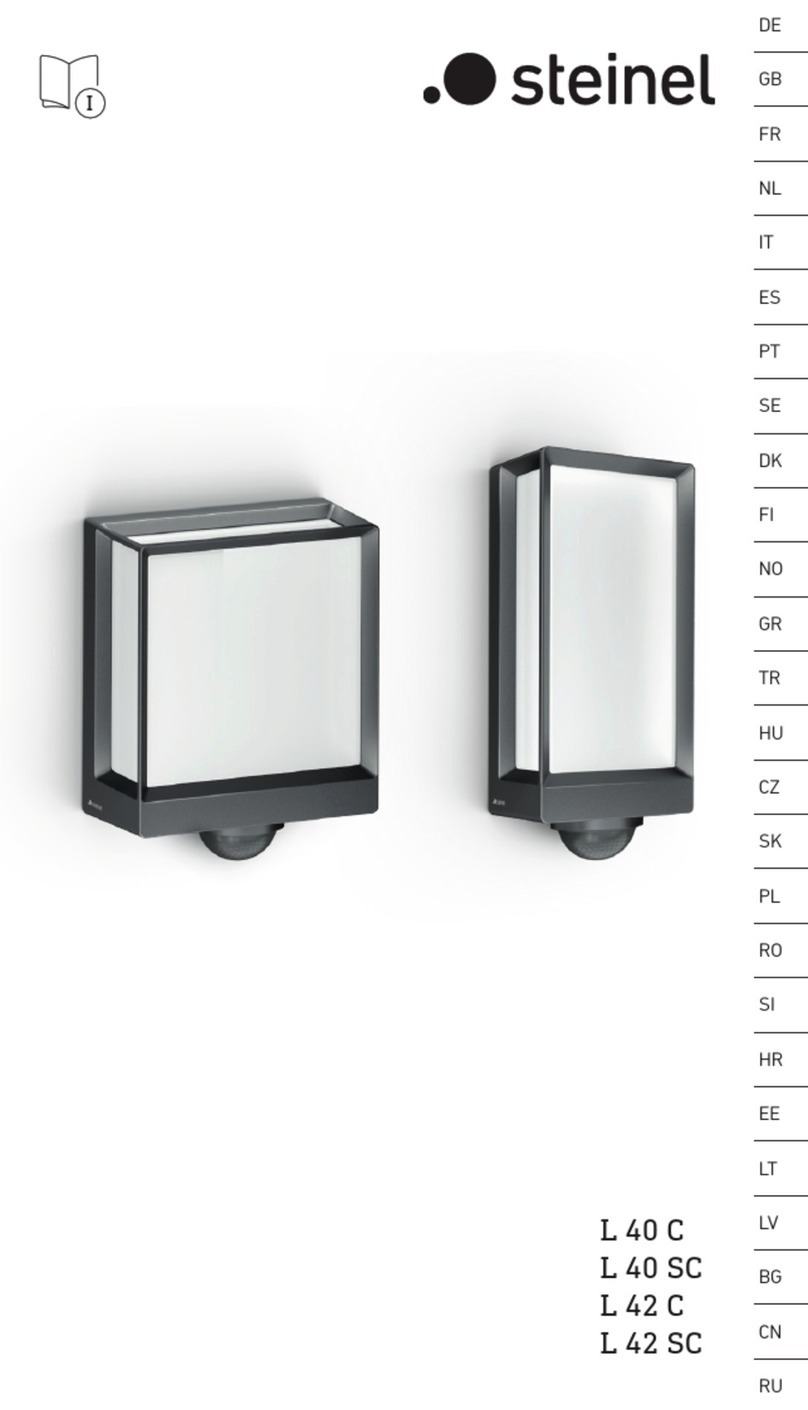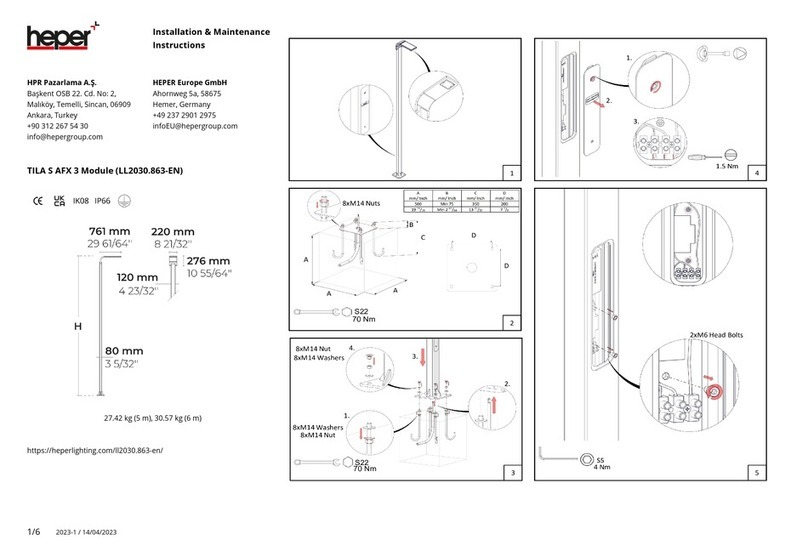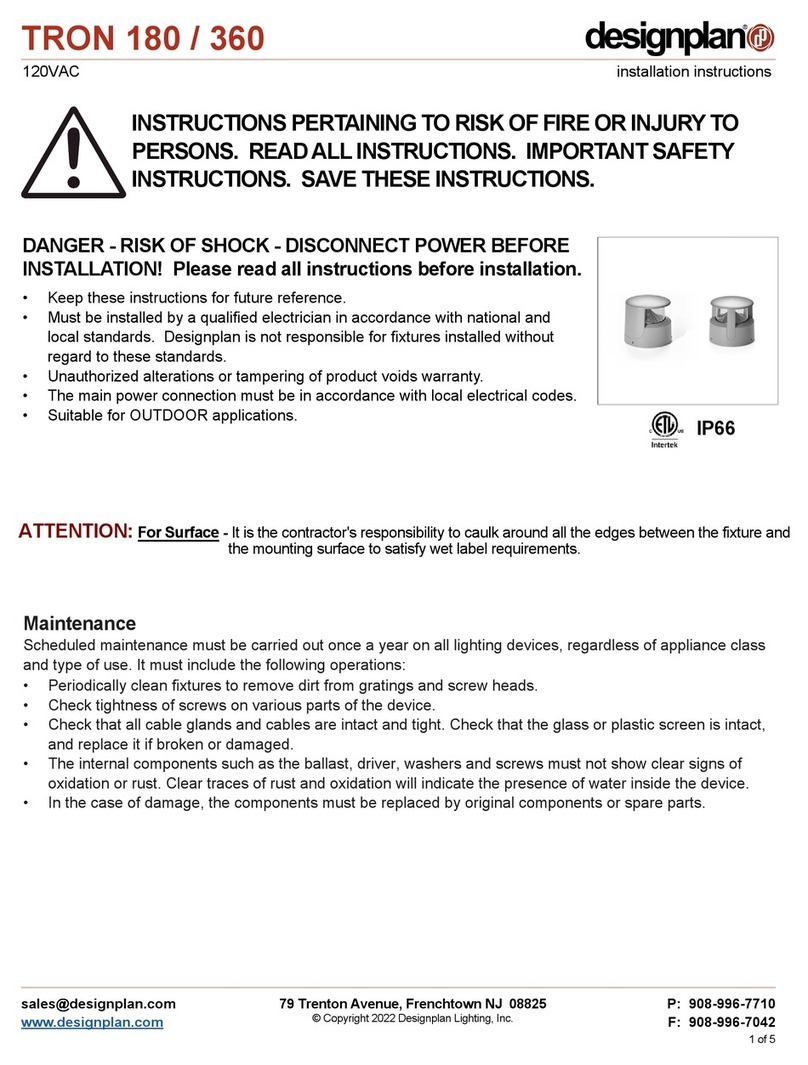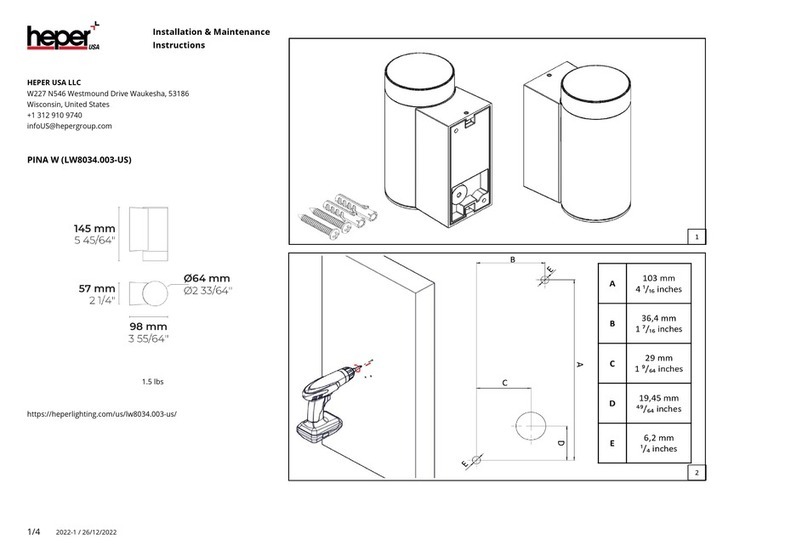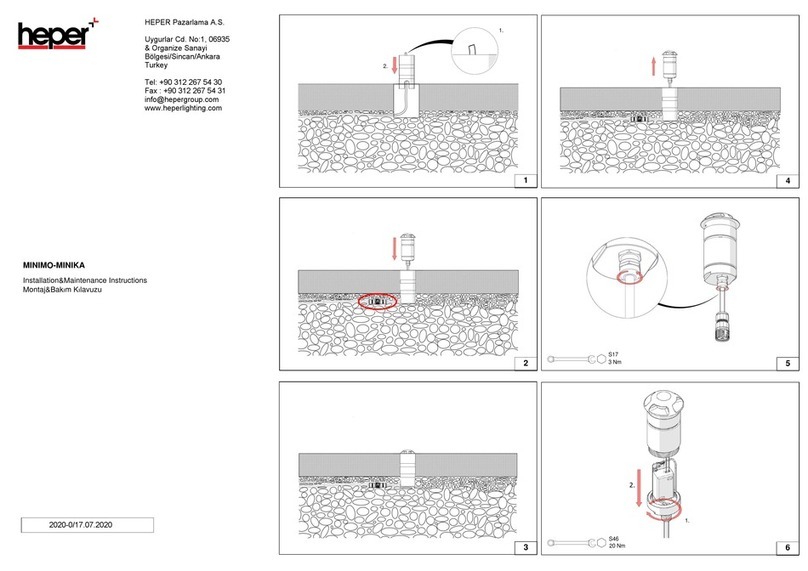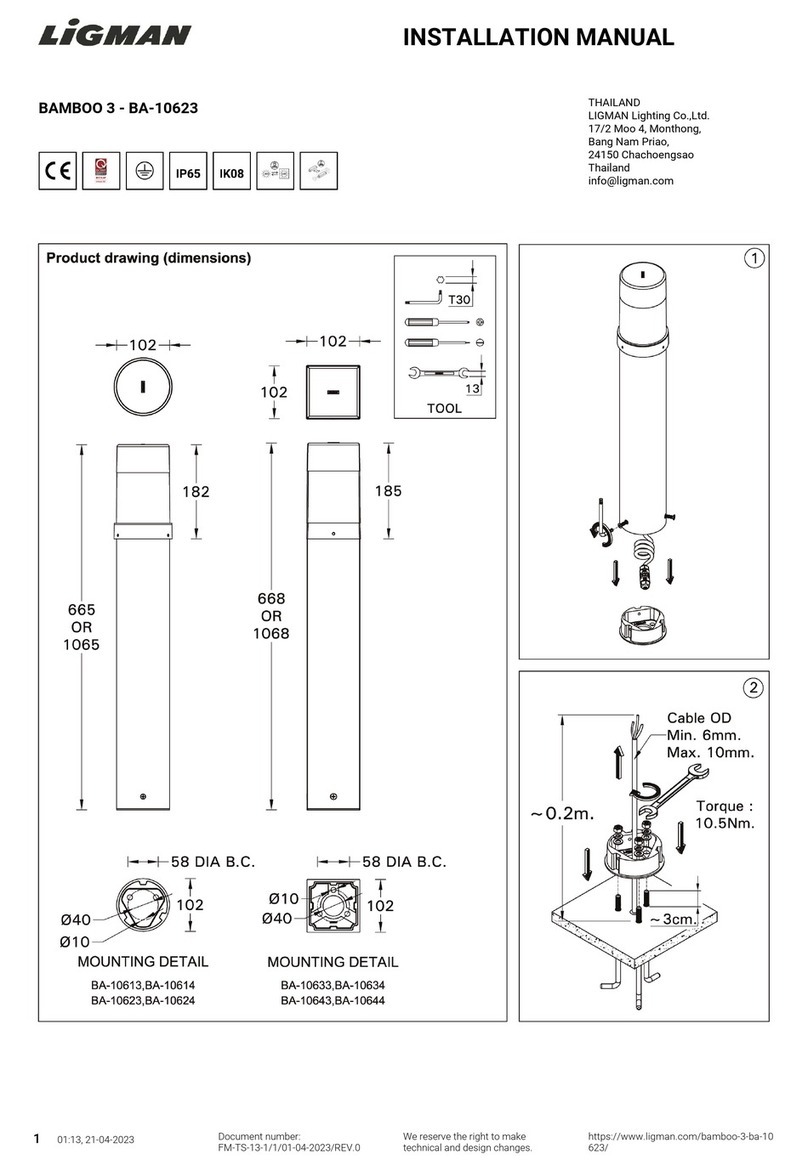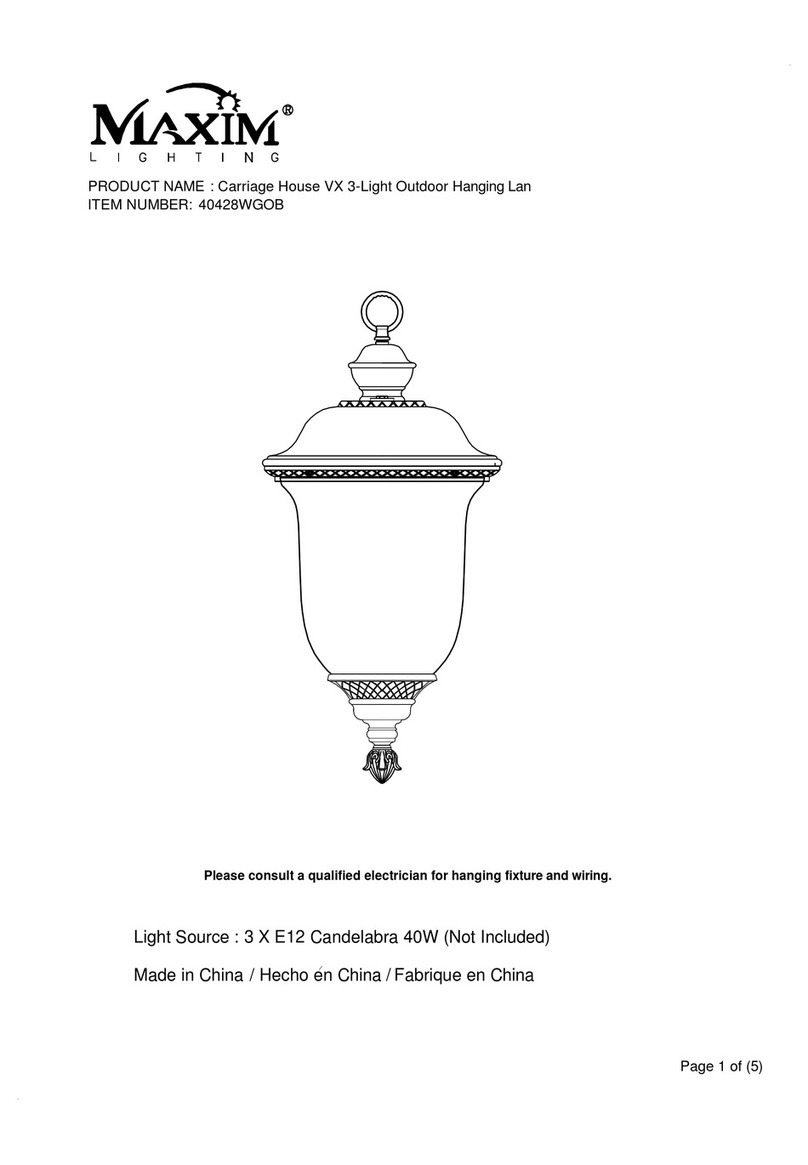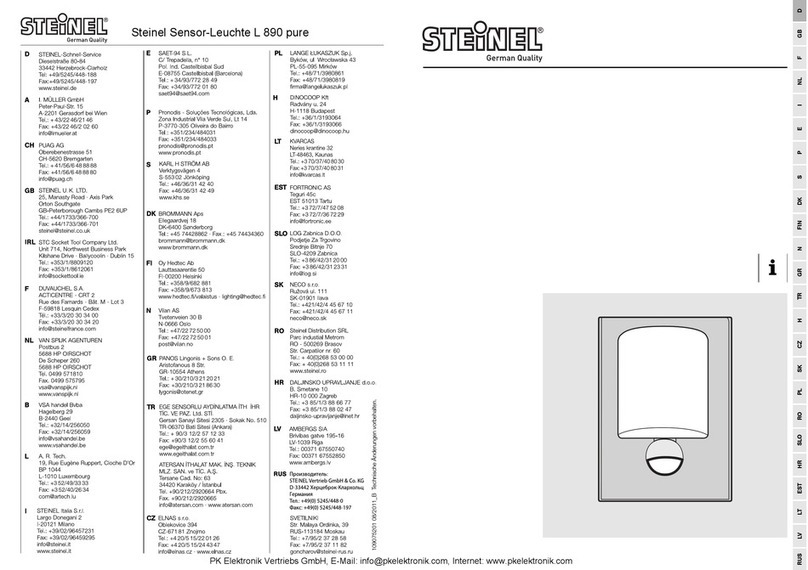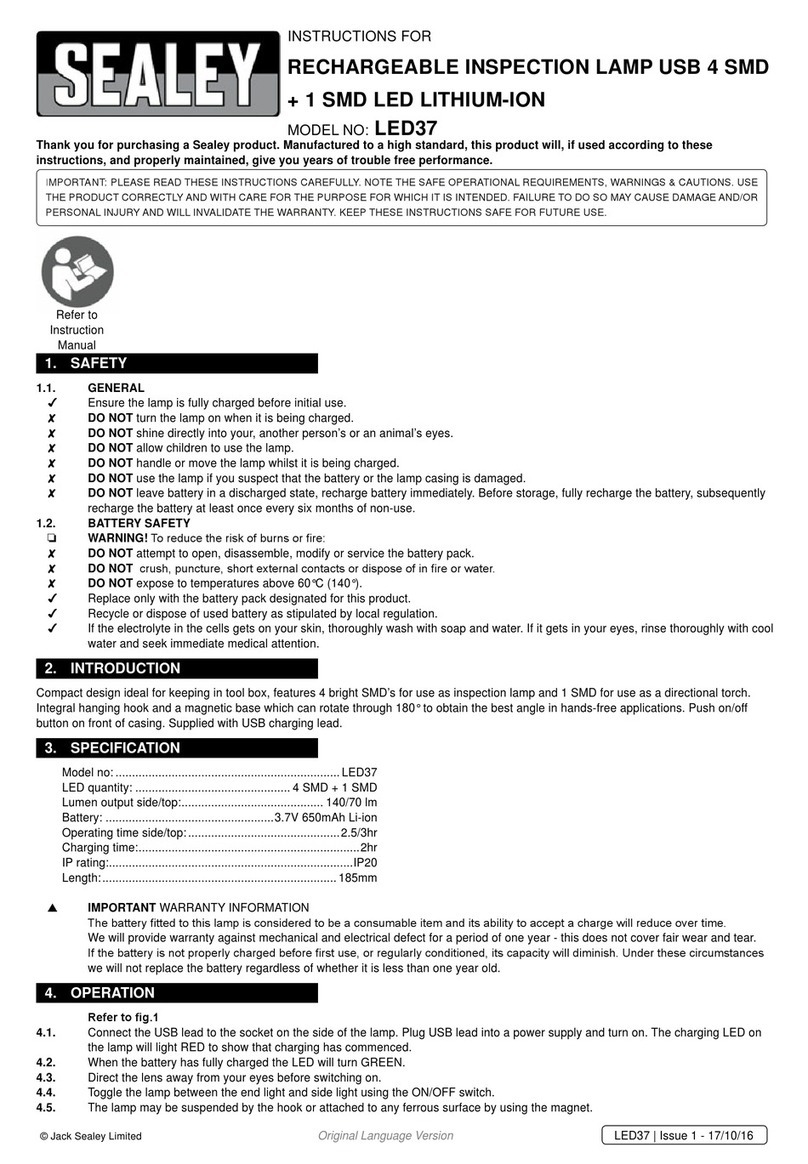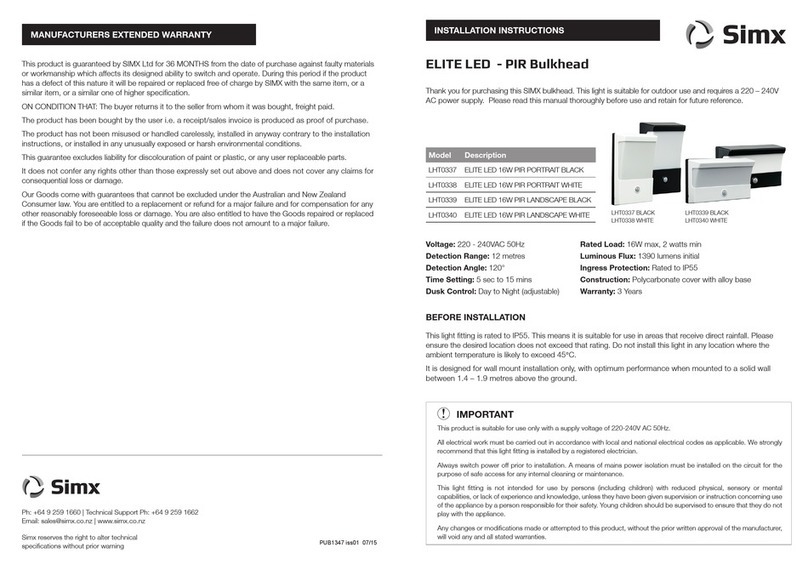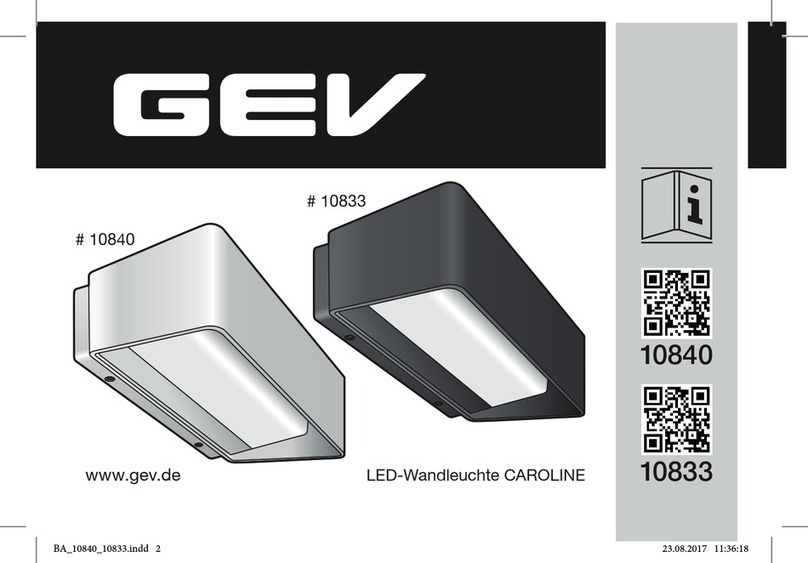
– 10 – – 11 –
GB
1. About this document
Please read carefully and keep in a safe place.
–Under copyright. Reproduction either in whole or
in part only with our consent.
–Subject to change in the interest of technical
progress.
Symbols
Hazard warning!
... Reference to other information in the
document.
2. General safety precautions
Disconnect the power supply before
attempting any work on the unit.
• During installation, the electric power cable to be
connected must not be live. Therefore, switch off
the power first and use a voltage tester to make
sure the wiring is off-circuit.
• Installing these lights involves work on the mains
voltage supply; installation must therefore be
carried out professionally in accordance with
the applicable national wiring regulations and
electrical operating conditions (DE-VDE 0100,
AT-ÖVE/ÖNORM E 8001-1, CH-SEV 1000).
• Only use genuine replacement parts.
• Repairs may only be made by specialist work-
shops.
3. L 220 LED / L 224 LED
L 240 LED / L 244 LED
Proper use
–Sensor-switched outdoor light with LEDs as
the light source.
–Suitable for wall mounting outdoors.
The L 220 / L224 LED and L 240 / 244 LED
sensor-switched outdoor lights, referred to in the
following as lights, are active motion detectors.
Movement activates light. For your convenience,
safety and peace of mind. The integrated pyroelec-
tric infrared detector senses the invisible heat radi-
ated from moving objects (people, animals, etc.).
The heat detected in this way is converted
electronically into a signal that switches the light
on. Heat is not detected through obstacles, such
as walls or panes of glass, and will therefore not
activate the light.
Package contents L 240 LED / L 244 LED (Fig. 3.1)
Package contents L 220 LED / L 224 LED (Fig. 3.2)
Product dimensions L 240 LED / L 244 LED (Fig. 3.3)
Product dimensions L 220 LED / L 224 LED (Fig. 3.4)
Product components
L 240 LED / L 244 LED (Fig. 3.5)
L 220 LED / L 224 LED (Fig. 3.6)
A Light enclosure with base
B Plug-in terminal
C Wall mount
D Sensor
4. Installation
• Switch OFF power supply (Fig. 4.1)
The leads consist of three wires:
L= phase conductor (usually black,
brown or grey)
N= neutral conductor (usually blue)
PE = protective-earth conductor (green/yellow)
If you are in any doubt, identify the conductors
using a voltage tester; then disconnect from the
power supply again. Connect the phase conductor
(L) and neutral conductor (N) to the terminal block.
Important:
Incorrectly wired connections will produce a short
circuit later on in the product or your fuse box. In
this case, you must identify the individual conduc-
tors once again and re-connect them. A mains
power switch for turning the unit ON and OFF may
of course be installed in the mains supply lead.
Note:
The light source in this light must only replaced by
the manufacturer or a service engineer authorised
by the manufacturer or by a similarly qualified
person.
Connect the mains power supply lead (Fig. 5.6)
Wiring diagram (Fig. 4.2)
GB
5. Mounting
• Check all components for damage.
• Do not use the product if it is damaged.
• Select an appropriate mounting location, giving
consideration to sensor reach and mounting
height (Fig. 5.1).
Mounting procedure
(Based on the example of L 220 LED)
• Switch OFF power supply (Fig. 4.1).
• Detach light housing from the wall mount, paying
attention to the position of the sensor (Fig. 5.2).
• Mark drill holes (Fig. 5.3).
• Drill holes and insert wall plugs (concealed power
supply cable (Fig. 5.4).
• Drill holes and insert wall plugs (with spacers for
surface power supply cable (Fig. 5.5).
• Connect conductors (Fig. 5.6).
• Connect plug-in connectors (Fig. 5.7).
• Fit light enclosure (A) onto wall mount (C). Pay
attention to plug-in connections as well as the
position of the sensor (Fig. 5.8).
• Screw light enclosure into place (Fig. 5.9).
• Switch ON power supply (Fig. 5.10).
• Make settings ➔ "6. Functions".
6. Functions
The sensor-switched light can be put into service
after mounting the light enclosure and connecting
to the mains power supply.
Factory settings
Twilight setting: daylight operation 2000 lux
Time setting: 8 s
Twilight setting / response threshold (Fig. 6.1)
–The sensor's response threshold can be infinitely
varied from 2–2000 lux.
–Control dial set to = daylight operation,
approx. 2000 lux.
–Control dial set to = night-time operation,
approx. 2 lux.
Time setting (Fig. 6.1)
–Light ON duration can be infinitely varied from
8 s - 35 min
–It is recommended that the shortest time be
selected for setting the detection zone.
–Control dial, shortest time = approx. 8 s
–Control dial, longest time = approx. 35 min
Adjusting the detection zone / reach setting
–Depending on the mounting height, the detection
zone setting can be optimised to suit require-
ments. The shroud foil can be used for masking
out any number of lens segments to limit reach
as required, e.g. to mask out paths or neigh-
bouring property (Fig. 6.2).
–Reach can be adjusted from 2-10 m by tilting
the sensor (D) through 90° (Fig. 6.3).
7. Disposal
Electrical and electronic equipment, accessories
and packaging must be recycled in an environmen-
tally compatible manner.
Do not dispose of electrical and electronic
equipment as domestic waste.
EU countries only:
Under the current European Directive on Waste
Electrical and Electronic Equipment and its imple-
mentation in national law, electrical and electronic
equipment no longer suitable for use must be
collected separately and recycled in an environ-
mentally compatible manner.

